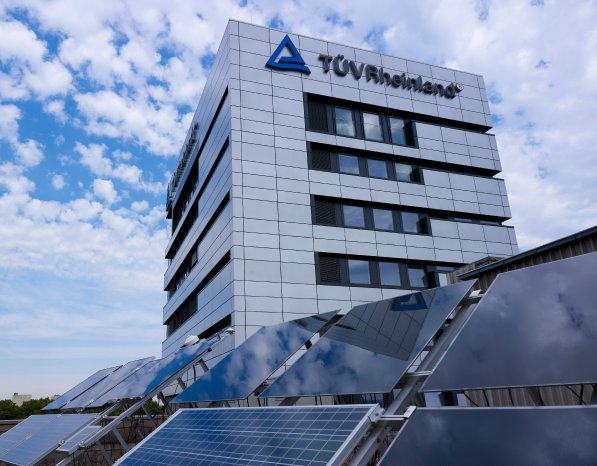TÜV Rheinland constructed five test facilities in order to take comparable measurements of the energy yield. Field investigations are already being performed on 17 module types – including thin-film modules and crystalline modules – from 13 manufacturers. They are subjected to a laboratory examination and performance measurement first before they undergo testing under real conditions for 24 months. All modules are then examined in the laboratory again.
The choice of project locations in the different climate zones was also based on TÜV Rheinland’s global network of photovoltaic test laboratories, which already cover the majority of global climate classifications: Cologne in Germany with a moderate Central European climate, Ancona in Italy with a Mediterranean climate and salty atmosphere, the US city of Tempe in the state of Arizona with a dry, tropical climate, Chennai in India with a subtropical climate, and a test facility in the Arabian desert where sandstorms also occur. The special features of the various photovoltaic modules based on different designs and materials are being analyzed with regard to their performance and climate effects, seasonal effects, low-light behavior, temperature behavior and spectral behavior.
In the comparative yield analyses which TÜV Rheinland has performed so far at the outdoor test facility in Cologne, yield differences of up to 5% have already been identified for different crystalline modules when compared with the measurements taken as reference in the laboratory, which also results in corresponding differences in returns. The differences are even greater when the measured thin-film modules are included.
This provides manufacturers participating in the current field tests with reliable indications of how their modules perform in different climatic conditions and what effect the respective climate has on yield. This is also very relevant to investor decisions. With the results of the measurements comparing their modules, manufacturers of modules will also receive information about ways to improve the technology of their products. In addition to energy yield comparisons, investigations are also being performed into the effect of dust and sand contamination in desert locations in particular. For example, different cleaning intervals will provide an indication of the best procedures and methods to be used when cleaning solar systems.


